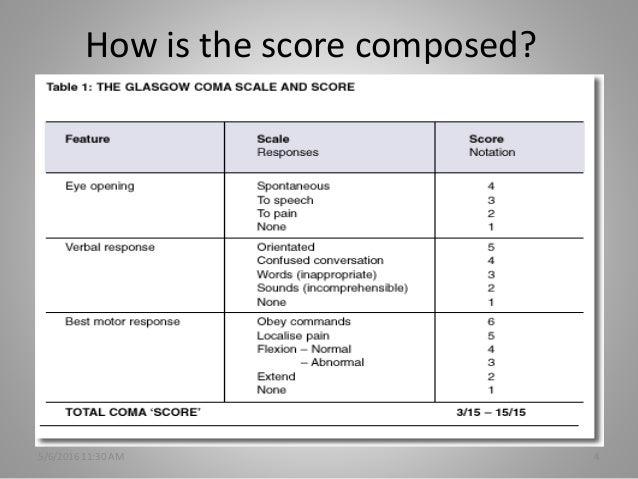

With the rapid expansion in the number of intensive care units, the arrival of computerised tomography (CT) and the spread of brain monitoring, interest in the management of the head injury patient grew.

The nursing staff quickly appreciated the clarity in capturing important trends in the patient’s condition. The display of results on a specially designed chart facilitated the identification of the patient’s clinical changes. The simplicity and ease of transmission of the scale has been welcomed in departments dealing with patients with acute brain injury from trauma and other causes. Adoption and dissemination of the Glasgow Coma Scale The goal in developing the scale was for it to be widely acceptable and to complement, not replace, the assessment of other neurological functions. The refinement took into account contributions from junior doctors and nurses as well as experienced international colleagues. Eyesĭevelopment of the GCS and Glasgow Coma Scale scoresĬomparison of assessments using different methods on a large number of patients in the Glasgow neurosurgical unit highlighted the merits of a multidimensional approach to assessment.Ī short list of terms capable of being clearly defined and ranked in order of importance was refined through inter-observer agreement studies. Scale scores guide initial decision-making and monitor trends in reactivity that are important in signalling the need for further action. Lancet 1974 2:81-4.) as a method of assigning a score, or level, of consciousness of patients with an acute brain injury GCS score, the parameters taken into account: The GCS, or Glasgow Coma Scale, was described in 1974 by Graham Teasdale and Bryan Jennett (Assessment of coma and impaired consciousness.


 0 kommentar(er)
0 kommentar(er)
